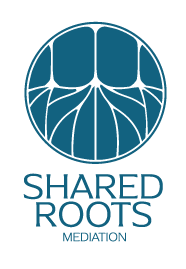Community Transformation After Sexual Harm: Churches and Religious Institutions
Throughout the two decades of my legal work representing survivors of violent crime, I was often told that sexual harm is an individual problem, solely a conflict between the person who was hurt and the person who harmed them. Yet what I saw on a daily basis is that sexual harm goes beyond this binary, leaving holes in families, friend groups, and larger communities, fractures that are usually ignored and never addressed. Survivors are left with a tattered or non-existent support system, and people who experienced secondary or vicarious harm are given no opportunities at repair. Too often communities are not engaged as part of the healing process and are left vulnerable to further harm and violence.
At Shared Roots, we use the term restorative justice to encompass both a philosophy and a social justice movement, rooted in indigenous practices and focused on how we, as a society, should address harm and wrongdoing without involving the traditional legal system. While our restorative justice processes center the harmed person and their needs and healing, true healing cannot occur in a vacuum; we must engage our communities and strengthen community-based systems to repair harm, mend community dynamics, and resist further violence. As stated by the founders of Creative Interventions, “To live violence-free lives, we must develop holistic strategies for addressing violence that speak to the intersection of all forms of oppression.”
What can a true community-engaged response look like? Let’s apply this process to a group of institutions that have faced many incidents of sexual harm: Religious institutions, including a number of churches in the Chicago area.
Too often, these institutions deal with sexual harm by requesting the person doing the harm quietly step down from their roles, resign, or retire early; make a blanket statement to the congregation regarding repentance and forgiveness; and immediately fill the vacant role with little or no more done to address the harm that occurred. The persons directly harmed are left with no support and may even be blamed for the loss of a charismatic leader, leading them to leave the community due to embarrassment or shame. Other members of the community receive no further communication and must decide how to move forward on their own, with some inevitably leaving the community as well.
However, this process does not need to be so alienating. While it is appropriate for the person who caused the harm to relinquish their authority, true accountability must include an opportunity to take responsibility for their actions, express remorse, and work towards change. By engaging the broader church community in the restorative process through dialogue, education about sexual violence, and opportunities to support the persons harmed, the community becomes part of the solution in denouncing harmful behavior and helping to hold the person who did the harm accountable. The community can also help to identify and repair all the various harms caused by the abuse, including supporting the healing of survivors and persons who have experienced secondary harm, such as spouses and partners, church volunteers, and families and friends of the person harmed.
The community can also help to identify and repair all the various harms caused by the abuse, including supporting the healing of survivors and persons who have experienced secondary harm, such as spouses and partners, church volunteers, and families and friends of the person harmed.
Finally, by fully integrating the congregation as a whole, the church can critically examine and address aspects of the religious culture, power dynamics, theology, and practices that may have enabled or failed to prevent the harm. Together, the community can design and implement policies and structural changes to improve safety and accountability.
Crafting these community-based processes requires a trauma-informed approach, with a deep understanding of the impacts of sexual harm and retraumatization risks, an approach in which few religious and lay leaders have experience.
Shared Roots Mediation works in consultation and collaboration with each specific community to tailor our services to the specific needs of the institution and encourage participants to integrate their lived experiences to enhance the work. Through our services, we work with participants to navigate the nuances of addressing sexual harm, creating space for healing, prevention, and community accountability. By focusing on building skills within church leadership and the broader congregation through training and modeling restorative processes, we at Shared Roots aim to empower communities to identify and implement possibilities for accountability, support, and healing that lead to community transformation.
If you are a leader or a member of a church or religious institution that would like to explore restorative justice possibilities for past or current sexual harm, please contact Shared Roots Mediation at info@sharedrootsmediation.com to schedule a free consultation.

